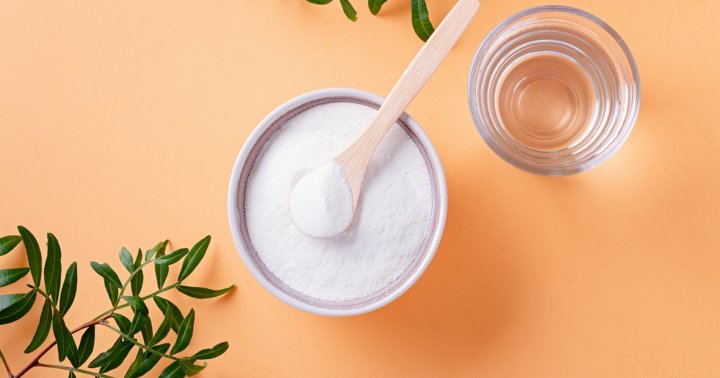Find Bugs On Your Houseplants? Don't Freak Out—Do This Instead
5 ways to get rid of them, STAT.
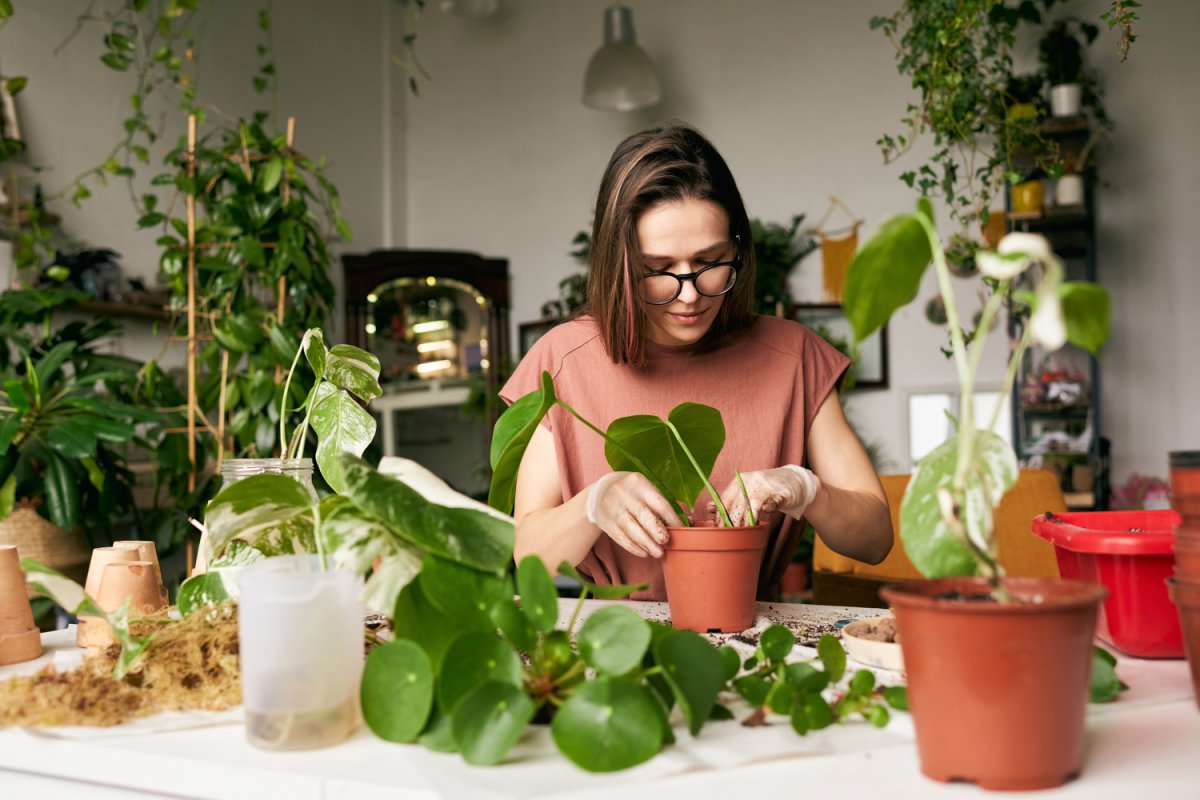
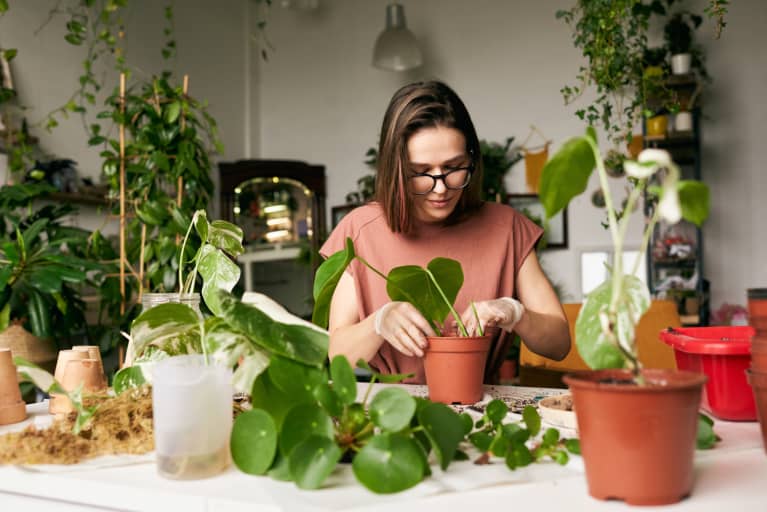
Our editors have independently chosen the products listed on this page. If you purchase something mentioned in this article, we may earn a small commission.
September 16, 2022 — 12:33 PM
Houseplants are living things, and they're bound to attract other living things (ahem, bugs) at some point. While houseplant pests are inevitable, they can be managed with a little diligence and know-how.
Here, experts share how to identify and kill bugs in houseplants to keep your greenery collection looking good as new.
How bugs get into houseplants.
Pests have a knack for seeking out tasty plants, even those that are situated indoors. They can fly or blow into your home through a window, hitch a ride on your clothes, arrive on a new plant, or come in on fruit or vegetables. Stressed plants that are not getting proper care also tend to send out signals that attract pests. Many of these critters reproduce very quickly (and asexually), so before you know it, one or two bugs can become a full-blown infestation.
"There are so many ways they can come in, and my message is always that it's normal to have pests if you have plants. It's almost unavoidable," Roos Kocken, a houseplant expert and sustainability advocate, tells mbg.
With that being said, getting into the habit of regularly checking your plants for signs of pests is a smart idea.
Pests can happen any time of year, but Kocken has noticed they tend to be especially active during seasonal transitions into spring and fall. Since bugs can often be trailed in on houseplants from the shop, you'll also want to keep an eye on any new plants you buy. Once you bring it home, "it is advised that you keep that plant separate from the rest for two weeks, inspecting it regularly for pests before allowing it into the fold, so to speak," Lauren Camilleri and Sophia Kaplan of Bloom: Flowering Plants For Indoors and Balconies, recommend.
Common houseplant pests & their tell-tale signs:
So, what exactly are you looking for when checking your plants for pests? "The pests themselves are so small that you probably won't see them," Kocken says, "but you can spot the damage they create earlier."
Here's an overview of the pests you'll often find on houseplants, and what their trails look like.
How to get rid of bugs in houseplant soil.
Once you've determined you have a pest problem, you have a few options depending on how severe the infestation is. Here are the treatment plans the plant pros recommend, in order of least to most involved:
Option 1: Spray them off with water.
If you spot a few larger pests, like mealybugs, on your plant's leaves, you can try to get rid of them by simply spraying them with water from a faucet or shower. Just be sure to aim away from your plant's soil so they don't just end up falling in there.
Option 2: Spray a gentle insecticide.
Insecticidal soaps can be very effective at killing soft-bodied insects like aphids, spider mites, and mealybugs. Made from potassium salts of fatty acids, they work by washing away pests' protective coating and then breaking down their cells. They can damage your plant when sprayed in high amounts, so be sure to follow the manufacturer's instructions when using them. Most will need to be sprayed on the tops and bottoms of your plant's leaves and soil every 5-7 days while insects are present.
Bioinsecticide sprays offer another solution; these are made from bacteria that can kill pests but shouldn't harm your plant.
It's best to choose an insecticide that is made using organic materials instead of a synthetic that might make your plant toxic to you and your pets. Consider one of the options below or make your own natural pesticide using this how-to guide.
Shop natural insecticides:
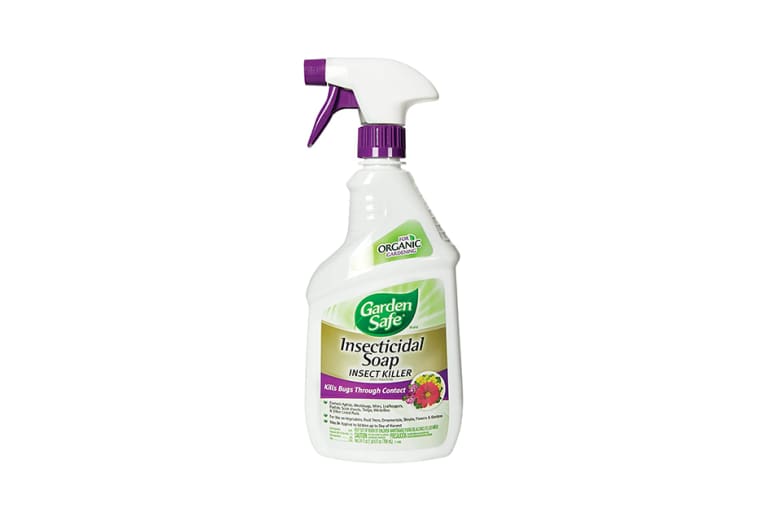
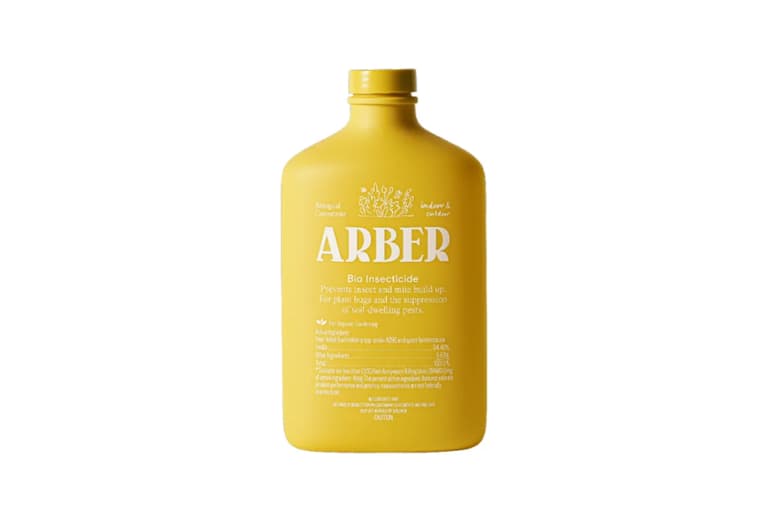
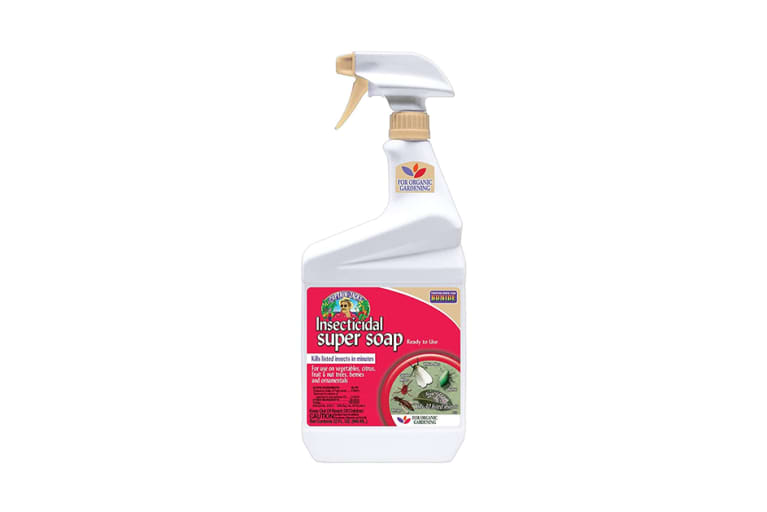
Option 3: Apply neem oil.
Neem oil is a natural pesticide that's extracted from the seed kernels of the neem tree (Azadirachta indica). The main ingredient in neem oil, Azadirachtin, eventually kills soft-bodied bugs by mimicking their natural hormones to disrupt their ability to feed and lay eggs. Diluted neem sprays are often used as a preventative measure, while more concentrated oils can kill existing pests. Read up on how to use both here.
Option 4: Try rubbing alcohol.
Rubbing alcohol can kill bugs by breaking down their exoskeletons, but it can also damage your plants if applied too willy-nilly. To apply alcohol in small, targeted amounts, Kocken shares the smart idea to put it in a water brush marker and gently run it over any visible pests like mealybugs to kill them on contact.
Option 5: Call on beneficial insects.
It may seem counterintuitive, but you can also treat a bug problem by bringing in more bugs. Beneficial insects like green lacewings and ladybugs can help gobble up harmful plant pests—and they won't damage your plant in the process. You can order these "good bugs" in packets online and place them into your plants for a second line of defense after any of the above measures. (You won't want to use an insecticide after adding these bugs since it will kill them too.)
Once you get over the initial ick factor, Kocken says that working with beneficial insects can actually be really comforting. "It makes me much more relaxed because I know I have a little army of good bugs working for me, so I don't have to be so stressed about [pests]," she says.
Can bugs eventually kill my houseplants?
While a few bugs here and there are no big deal, larger infestations of certain pests can be detrimental to plant health. "Mealies, spider mites, and scales are sap suckers and can eventually kill off individual leaves. Severe infestations can impact an entire plant," Doane explains. "Fungus gnat larvae attack the roots of the plant and can stunt growth overall. The adult flies are more of a nuisance than anything else."
Camilleri and Kaplan add that pests are also quick to spread to nearby plants. So if you spot them on one plant, you should separate it from the rest of your collection before starting with any of the above treatment options.
Bugs are an inevitable nuisance of plant parenthood, but there are a number of ways to get rid of creepy crawlies once you spot them. An ounce of prevention is also worth a pound of cure here: Be sure to give your houseplants proper water, sunlight, and soil to help them stay healthy and largely pest-free.
Want to learn how feng shui can help you create a high-vibe home and set powerful intentions to manifest your dreams? This is feng shui the modern way - no superstitions, all good vibes. Click here to register for a free session with Dana that will give you 3 tips to transform your home today!
Reset Your Gut
Sign up for our FREE doctor-approved gut health guide featuring shopping lists, recipes, and tips
You are now subscribed
Be on the lookout for a welcome email in your inbox!
https://www.mindbodygreen.com/articles/how-to-get-rid-of-bugs-in-houseplant-soil-naturally-non-tox

 AbJimroe
AbJimroe 







